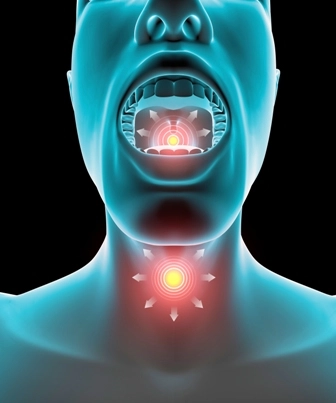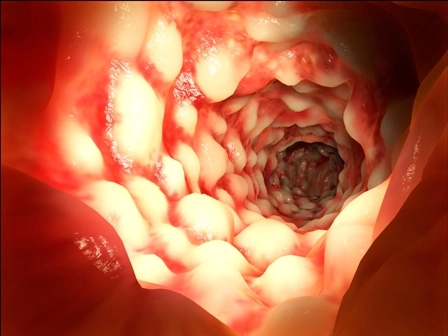Internal Medicine Coding Alert
Reporting Infectious Mononucleosis in ICD-10

Zip from a single code in ICD-9 to 16 highly specific ICD-10 codes.
When you begin using ICD-10 codes on Oct.1, 2015, you will need to check out chart notes to look for viral etiology and complications, as this will affect the way you report infectious mononucleosis in ICD-10.
ICD-9: When reporting a diagnosis of infectious mononucleosis, you have to report it with the ICD-9 code, 075 (Infectious mononucleosis). You report the same diagnosis code if your clinician diagnoses the patient with glandular fever, monocytic angina, or Pfeiffer’s disease.
You cannot report the ICD-9 code, 075, when your clinician diagnoses the patient with an upper respiratory tract infection. You report this from one of the codes from the ICD-9 range, 460-466.19. For a diagnosis of influenza, you have to report from the ranges, 487.0-487.8 or 488.01-488.89 instead of using 075.
Note: The ICD-9 code, 075, is the single option that is available in the ICD-9 range to report a diagnosis of infectious mononucleosis. You do not have any other expansions to this code to get more specific on the type of complications or associated conditions that the patient might be suffering from.
ICD-10: Unlike ICD-9, when you begin using ICD-10 codes to report a diagnosis of infectious mononucleosis, you will need to delve further into documentation to check the etiology of the condition, as if affects your code selection. Not only this, you will also have to look at the type of complications from which the patient is suffering, as you have further expansions to the ICD-10 codes from which you will need to choose.
When reporting a diagnosis of infectious mononucleosis, you start your reporting using the ICD-10 code, B27 (Infectious mononucleosis). As in ICD-9, you use the same parent code for a diagnosis of glandular fever, monocytic angina or Pfeiffer’s disease.
Depending on the etiology of the condition, you have the following options from which to choose to report thediagnosis:
- B27.0,Gammaherpesviral mononucleosis
- B27.1,Cytomegaloviral mononucleosis
- B27.8,Other infectious mononucleosis
-
B27.9,Infectious mononucleosis, unspecified
You have to use B27.0- when the etiology is herpes virus and use B27.1- when the cause of the mononucleosis is cytomegalovirus. For any other etiology, you will have to use B27.8-. If your clinician has not identified the etiology of the condition, you will have to use B27.9- series.
Once you have zeroed in on etiology of the condition, you will next have to look further into documentation to identify whether or not your Internal medicine specialist has mentioned the presence of any complications or associated conditions like meningitis or polyneuropathy. Based on this, you will have to further expand the above mentioned codes categories using a fifth digit expansion:
- 0, without complication
- 1, with polyneuropathy
- 2, with meningitis
-
9, with other complication
For instance, if your clinician identifies the diagnosis as infectious mononucleosis caused by cytomegalovirus but does not mention the presence of any complications, you will have to report the diagnosis with B27.10. On the other hand, if the patient has meningitis, you will report this with B27.12.
Relearn on These Basics Briefly
Documentation spotlight: Your clinician will arrive at a diagnosis of infectious mononucleosis based on findings of history, signs and symptoms, physical examination, and results of certain tests.
Some of the common findings that you might observe in a patient with infectious mononucleosis will include fever, nausea, reduced appetite, cough, sore throat, fatigue, weakness, and swollen glands in the neck or armpits. Some patients might experience chest pain and pain in the eyes and develop sensitivity to light.
Upon examination, your physician might note fever, rash, pharyngitis, and enlargement of the lymph nodes. Your clinician might also note the presence of hepatosplenomegaly, periorbital edema, uvular edema, jaundice, tonsillar enlargement, pharyngitis, and petechiae in the palatal area.
Your clinician will also check for complications and other co-existing conditions such as encephalitis, polyneuropathy, meningitis, cranial palsies, pancreatitis, glomerular nephritis, and any other such complications.
Tests: When your Internist suspects infectious mononucleosis, he will conduct many tests to confirm the diagnosis and to rule out other conditions. He will order blood tests like complete blood count (CBC), differential count, and erythrocyte sedimentation rate (ESR), which will help in differentiating infectious mononucleosis and rule out other conditions that might cause similar signs and symptoms. Your clinician will also order liver function tests (LFTs) to help zero in on mononucleosis.
Finally, your clinician will also order specific antibody tests to help confirm the diagnosis of infectious mononucleosis.
Coding tip: Don’t report infectious mononucleosis until the results from tests confirm the diagnosis and the viral etiology has been identified. Absent a definitive diagnosis, you will need to code the signs and symptoms that prompted the patient’s encounter with the clinician.
Related Articles
Internal Medicine Coding Alert
- Behavioral Counseling:
Thorough Understanding of G0445 Ensures HIBC Reporting Success
Hint: Don’t forget to report appropriate diagnosis codes to support medical necessity. When your Internal [...] - Payer Pointers:
Clear Out Some Coding Misconceptions with Advice Direct from NGS
Look out for guidance with MDM, X{EPSU}, PQRS, and more. If you are not knowing [...] - ICD-10 Update:
Reporting Infectious Mononucleosis in ICD-10
Zip from a single code in ICD-9 to 16 highly specific ICD-10 codes. When you [...] - You Be the Coder:
Follow Integumentary Codes For Wart Removal From Buccal Sulcus
Question: Our Internal medicine physician recently removed ten lesions of verucca vulgaris from the buccal sulcus [...] - Reader Question:
Use PFSH To Decide E/M Code Level
Question: I have a claim in front of me that is giving me pause, because I [...]




